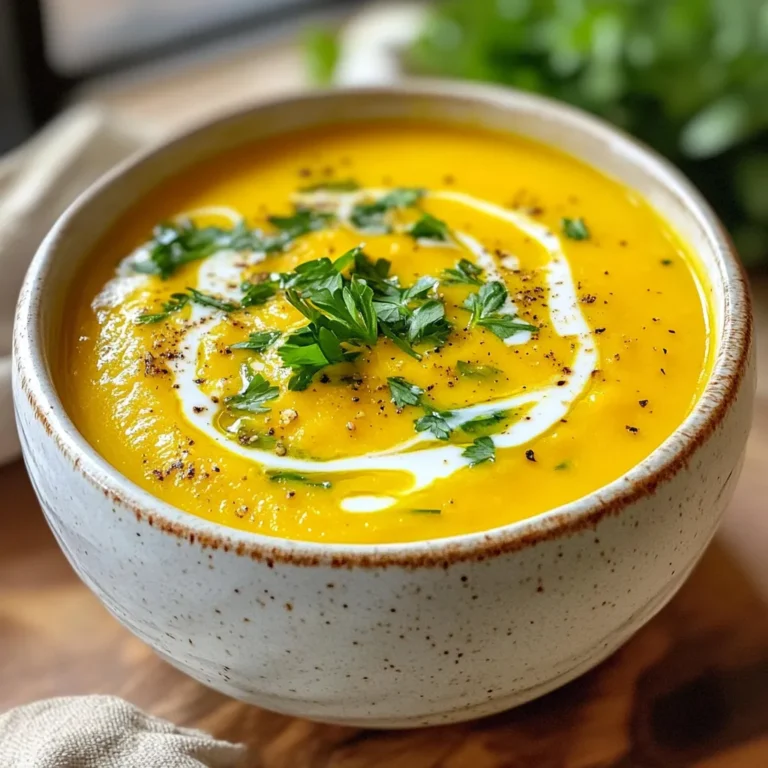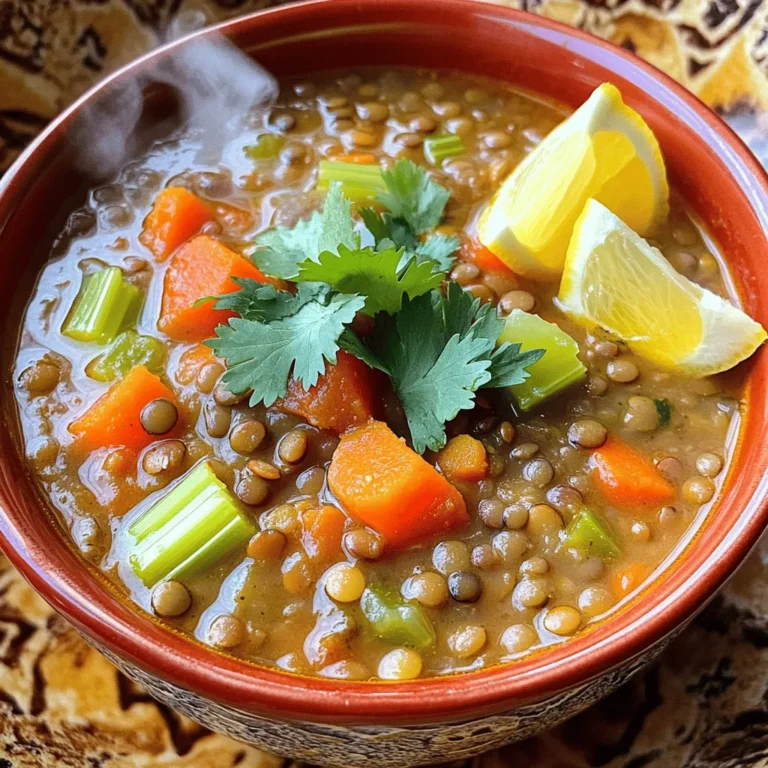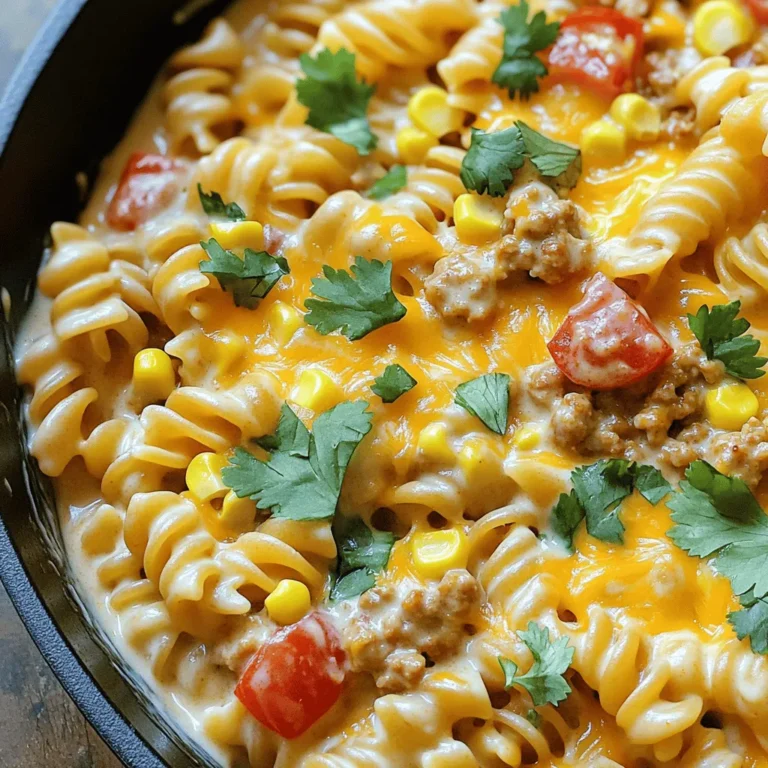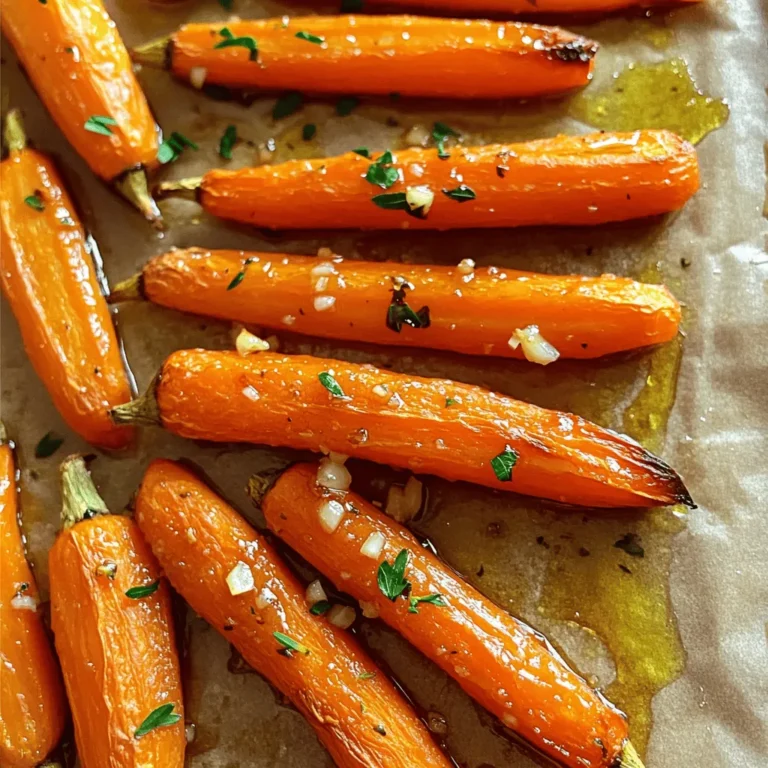Quick Garlic Shrimp Pasta Irresistible and Easy Dish
![- 8 oz linguine or spaghetti - 1 lb large shrimp, peeled and deveined - 4 cloves garlic, finely minced - 1/4 cup extra-virgin olive oil - 1 teaspoon red pepper flakes - 1/2 cup fresh parsley, finely chopped - 1 lemon, juiced and zested - Salt and freshly ground black pepper to taste - Grated Parmesan cheese (optional) To make Quick Garlic Shrimp Pasta, you need fresh and quality ingredients. The base of this dish is linguine or spaghetti, which holds the sauce nicely. I love using large shrimp because they cook quickly and have a great flavor. Garlic is a must here. It adds a rich, aromatic taste that makes the dish special. Next, the olive oil brings everything together. I always choose extra-virgin for its fresh and fruity flavor. Red pepper flakes add that perfect kick. Adjust the amount to fit your spice level. Fresh parsley brightens the dish, making it look vibrant. The lemon juice and zest add a zesty touch that balances the richness. Don’t forget salt and pepper to enhance all the flavors. If you want to make it extra savory, sprinkle some grated Parmesan cheese on top. These ingredients work together to create a dish that is simple yet full of flavor. For the full recipe, refer to the section above. - Bring a large pot of water to a boil. - Add salt to the water for flavor. - Cook the pasta according to the package instructions. - Reserve about 1 cup of the pasta water before draining. - Heat olive oil in a large skillet over medium heat. - Add minced garlic and red pepper flakes. - Sauté the garlic for about 30 seconds until fragrant. - Introduce the shrimp into the skillet. - Season the shrimp with salt and black pepper. - Cook for about 2-3 minutes until the shrimp turn pink and opaque. - Toss the cooked pasta into the skillet with the shrimp. - Add the reserved pasta water for creaminess. - Pour in lemon juice and zest for brightness. - Fold in the chopped fresh parsley for a fresh taste. - Taste and adjust seasoning if needed. - Plate the pasta into individual bowls. - Garnish with extra parsley and a lemon wedge. - Serve warm and enjoy this dish. For detailed cooking steps, check the Full Recipe. To get the best garlic taste, avoid burning it. When you heat garlic, it should become fragrant but not brown. Burnt garlic can taste bitter and ruin your dish. Start with medium heat and watch it closely. If you like spice, adjust the red pepper flakes. Add more for heat or less for mildness. Taste as you go, and find what suits you best. Cooking pasta to al dente is key. This means the pasta should be firm but not hard. Overcooked pasta can turn mushy and lose its bite. Before draining your pasta, save some pasta water. This starchy water helps the sauce stick and adds flavor. It’s a simple trick that makes a big difference! For side dishes, consider a fresh salad or garlic bread. These pair well with the pasta and add balance to your meal. When it comes to wine, a crisp white wine works best. Look for a Sauvignon Blanc or a Pinot Grigio. These wines enhance the garlic flavors and make the meal feel special. {{image_4}} You can switch up the pasta to fit your needs. Try whole wheat or gluten-free pasta. Both options work well with this dish and add a different taste. Fresh herbs can change the flavor too. Use basil or chives for a fresh twist. They brighten up the shrimp pasta and add a new layer of taste. You can explore other seafood options if you want. Scallops and calamari both taste great in this dish. They offer a nice change from shrimp while keeping the dish light. For a vegetarian version, use mushrooms instead of shrimp. Mushrooms have a meaty texture and soak up flavors well. This swap keeps the dish satisfying without meat. Want a richer sauce? Adding cream can make your dish more decadent. It gives the pasta a smooth texture that many love. You can also add cherry tomatoes for freshness. They pop with flavor and add color to your plate. This small change can elevate your garlic shrimp pasta experience. For a full recipe, check out the details above. To store leftover pasta, place it in an airtight container. Make sure to let it cool first. This helps prevent sogginess. You can keep it in the fridge for up to three days. After that, the shrimp may lose its quality. Always check for any off smells or changes in color before eating. When reheating pasta, use a skillet. This keeps the dish from getting too dry. Add a splash of water or olive oil to help. Heat it on low, stirring gently. Avoid using the microwave if you can. It can make the shrimp rubbery. Always taste a little before serving to ensure it's warm and flavorful. Yes, you can freeze garlic shrimp pasta! First, let the dish cool completely. Then, place it in a freezer-safe container. Leave some space for expansion. You can freeze it for up to two months. To thaw, move it to the fridge overnight. Reheat it on the stove, adding a bit of water or oil to restore moisture. You can make Quick Garlic Shrimp Pasta in about 30 minutes. - Prep time: 10 minutes - Cooking time: 20 minutes Yes, you can use frozen shrimp. Just thaw them first. - To thaw shrimp, place them in cold water for about 15-20 minutes. - Ensure shrimp are peeled and deveined before cooking. You can pair this dish with several sides: - A fresh garden salad - Garlic bread for dipping - Steamed vegetables like broccoli or asparagus To reduce the spice, you can: - Use fewer red pepper flakes or omit them. - Add more olive oil or butter to mellow the heat. I recommend using linguine or spaghetti. - These pasta types hold the sauce well. - You can also try fettuccine for a different texture. For the full recipe, refer to the [Full Recipe]. Quick Garlic Shrimp Pasta is simple and tasty. You learned about key ingredients, cooking steps, and useful tips. I focused on making garlic and shrimp shine while keeping it easy. You can swap out ingredients, store leftovers, and reheat without losing flavor. Try different flavors to make it your own. Follow these steps, and enjoy a delicious meal any day of the week. Cooking should be fun and satisfying, so gather your ingredients and start creating!](https://dishtreats.com/wp-content/uploads/2025/06/6901a993-fcd3-4db1-9297-5790b6f94dfa.webp)
Are you craving a quick yet delicious meal? This Quick Garlic Shrimp Pasta is perfect for busy nights. I’ll guide you through each easy step, from cooking the pasta to sautéing the shrimp in fragrant garlic and olive oil. With just a few ingredients, you can whip up this irresistible dish in no time. Let’s dive in and make dinner a breeze!
Ingredients
Main Ingredients for Quick Garlic Shrimp Pasta
- 8 oz linguine or spaghetti
- 1 lb large shrimp, peeled and deveined
- 4 cloves garlic, finely minced
Additional Ingredients
- 1/4 cup extra-virgin olive oil
- 1 teaspoon red pepper flakes
- 1/2 cup fresh parsley, finely chopped
- 1 lemon, juiced and zested
- Salt and freshly ground black pepper to taste
- Grated Parmesan cheese (optional)
To make Quick Garlic Shrimp Pasta, you need fresh and quality ingredients. The base of this dish is linguine or spaghetti, which holds the sauce nicely. I love using large shrimp because they cook quickly and have a great flavor. Garlic is a must here. It adds a rich, aromatic taste that makes the dish special.
Next, the olive oil brings everything together. I always choose extra-virgin for its fresh and fruity flavor. Red pepper flakes add that perfect kick. Adjust the amount to fit your spice level. Fresh parsley brightens the dish, making it look vibrant. The lemon juice and zest add a zesty touch that balances the richness.
Don’t forget salt and pepper to enhance all the flavors. If you want to make it extra savory, sprinkle some grated Parmesan cheese on top. These ingredients work together to create a dish that is simple yet full of flavor.
Step-by-Step Instructions
Cooking the Pasta
- Bring a large pot of water to a boil.
- Add salt to the water for flavor.
- Cook the pasta according to the package instructions.
- Reserve about 1 cup of the pasta water before draining.
Sautéing the Garlic
- Heat olive oil in a large skillet over medium heat.
- Add minced garlic and red pepper flakes.
- Sauté the garlic for about 30 seconds until fragrant.
Cooking the Shrimp
- Introduce the shrimp into the skillet.
- Season the shrimp with salt and black pepper.
- Cook for about 2-3 minutes until the shrimp turn pink and opaque.
Combining Ingredients
- Toss the cooked pasta into the skillet with the shrimp.
- Add the reserved pasta water for creaminess.
- Pour in lemon juice and zest for brightness.
Finishing Touches
- Fold in the chopped fresh parsley for a fresh taste.
- Taste and adjust seasoning if needed.
Serving Instructions
- Plate the pasta into individual bowls.
- Garnish with extra parsley and a lemon wedge.
- Serve warm and enjoy this dish.
Tips & Tricks
Perfecting the Garlic Flavor
To get the best garlic taste, avoid burning it. When you heat garlic, it should become fragrant but not brown. Burnt garlic can taste bitter and ruin your dish. Start with medium heat and watch it closely.
If you like spice, adjust the red pepper flakes. Add more for heat or less for mildness. Taste as you go, and find what suits you best.
Cooking Pasta to Perfection
Cooking pasta to al dente is key. This means the pasta should be firm but not hard. Overcooked pasta can turn mushy and lose its bite.
Before draining your pasta, save some pasta water. This starchy water helps the sauce stick and adds flavor. It’s a simple trick that makes a big difference!
Enhancing the Dish
For side dishes, consider a fresh salad or garlic bread. These pair well with the pasta and add balance to your meal.
When it comes to wine, a crisp white wine works best. Look for a Sauvignon Blanc or a Pinot Grigio. These wines enhance the garlic flavors and make the meal feel special.
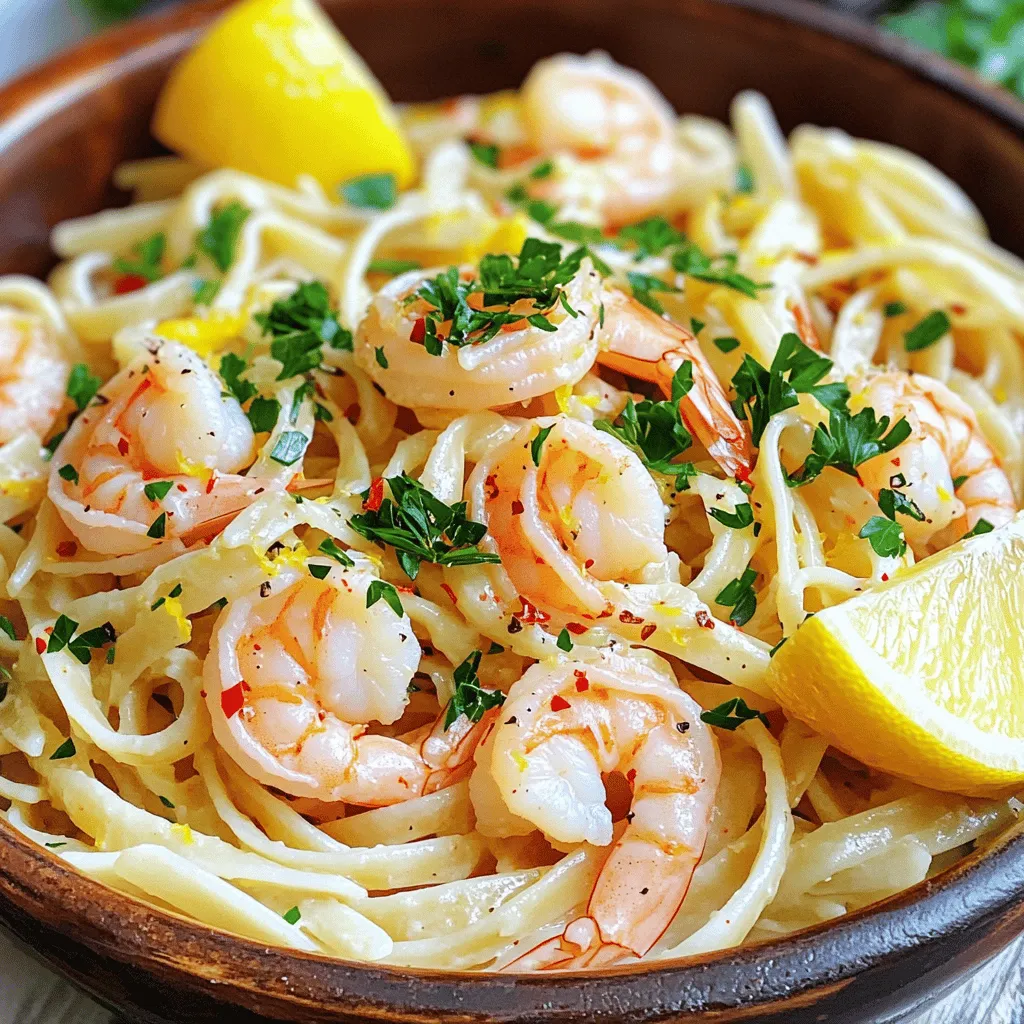
Variations
Ingredient Swaps
You can switch up the pasta to fit your needs. Try whole wheat or gluten-free pasta. Both options work well with this dish and add a different taste. Fresh herbs can change the flavor too. Use basil or chives for a fresh twist. They brighten up the shrimp pasta and add a new layer of taste.
Protein Alternatives
You can explore other seafood options if you want. Scallops and calamari both taste great in this dish. They offer a nice change from shrimp while keeping the dish light. For a vegetarian version, use mushrooms instead of shrimp. Mushrooms have a meaty texture and soak up flavors well. This swap keeps the dish satisfying without meat.
Flavor Enhancements
Want a richer sauce? Adding cream can make your dish more decadent. It gives the pasta a smooth texture that many love. You can also add cherry tomatoes for freshness. They pop with flavor and add color to your plate. This small change can elevate your garlic shrimp pasta experience.
Storage Info
Refrigeration Storage
To store leftover pasta, place it in an airtight container. Make sure to let it cool first. This helps prevent sogginess. You can keep it in the fridge for up to three days. After that, the shrimp may lose its quality. Always check for any off smells or changes in color before eating.
Reheating Tips
When reheating pasta, use a skillet. This keeps the dish from getting too dry. Add a splash of water or olive oil to help. Heat it on low, stirring gently. Avoid using the microwave if you can. It can make the shrimp rubbery. Always taste a little before serving to ensure it’s warm and flavorful.
Freezing Instructions
Yes, you can freeze garlic shrimp pasta! First, let the dish cool completely. Then, place it in a freezer-safe container. Leave some space for expansion. You can freeze it for up to two months. To thaw, move it to the fridge overnight. Reheat it on the stove, adding a bit of water or oil to restore moisture.
FAQs
How long does it take to make Quick Garlic Shrimp Pasta?
You can make Quick Garlic Shrimp Pasta in about 30 minutes.
- Prep time: 10 minutes
- Cooking time: 20 minutes
Can I use frozen shrimp for this recipe?
Yes, you can use frozen shrimp. Just thaw them first.
- To thaw shrimp, place them in cold water for about 15-20 minutes.
- Ensure shrimp are peeled and deveined before cooking.
What can I serve with garlic shrimp pasta?
You can pair this dish with several sides:
- A fresh garden salad
- Garlic bread for dipping
- Steamed vegetables like broccoli or asparagus
How do I make this dish less spicy?
To reduce the spice, you can:
- Use fewer red pepper flakes or omit them.
- Add more olive oil or butter to mellow the heat.
What type of pasta works best for garlic shrimp?
I recommend using linguine or spaghetti.
- These pasta types hold the sauce well.
- You can also try fettuccine for a different texture.
Quick Garlic Shrimp Pasta is simple and tasty. You learned about key ingredients, cooking steps, and useful tips. I focused on making garlic and shrimp shine while keeping it easy. You can swap out ingredients, store leftovers, and reheat without losing flavor. Try different flavors to make it your own. Follow these steps, and enjoy a delicious meal any day of the week. Cooking should be fun and satisfying, so gather your ingredients and start creating!
![- 8 oz linguine or spaghetti - 1 lb large shrimp, peeled and deveined - 4 cloves garlic, finely minced - 1/4 cup extra-virgin olive oil - 1 teaspoon red pepper flakes - 1/2 cup fresh parsley, finely chopped - 1 lemon, juiced and zested - Salt and freshly ground black pepper to taste - Grated Parmesan cheese (optional) To make Quick Garlic Shrimp Pasta, you need fresh and quality ingredients. The base of this dish is linguine or spaghetti, which holds the sauce nicely. I love using large shrimp because they cook quickly and have a great flavor. Garlic is a must here. It adds a rich, aromatic taste that makes the dish special. Next, the olive oil brings everything together. I always choose extra-virgin for its fresh and fruity flavor. Red pepper flakes add that perfect kick. Adjust the amount to fit your spice level. Fresh parsley brightens the dish, making it look vibrant. The lemon juice and zest add a zesty touch that balances the richness. Don’t forget salt and pepper to enhance all the flavors. If you want to make it extra savory, sprinkle some grated Parmesan cheese on top. These ingredients work together to create a dish that is simple yet full of flavor. For the full recipe, refer to the section above. - Bring a large pot of water to a boil. - Add salt to the water for flavor. - Cook the pasta according to the package instructions. - Reserve about 1 cup of the pasta water before draining. - Heat olive oil in a large skillet over medium heat. - Add minced garlic and red pepper flakes. - Sauté the garlic for about 30 seconds until fragrant. - Introduce the shrimp into the skillet. - Season the shrimp with salt and black pepper. - Cook for about 2-3 minutes until the shrimp turn pink and opaque. - Toss the cooked pasta into the skillet with the shrimp. - Add the reserved pasta water for creaminess. - Pour in lemon juice and zest for brightness. - Fold in the chopped fresh parsley for a fresh taste. - Taste and adjust seasoning if needed. - Plate the pasta into individual bowls. - Garnish with extra parsley and a lemon wedge. - Serve warm and enjoy this dish. For detailed cooking steps, check the Full Recipe. To get the best garlic taste, avoid burning it. When you heat garlic, it should become fragrant but not brown. Burnt garlic can taste bitter and ruin your dish. Start with medium heat and watch it closely. If you like spice, adjust the red pepper flakes. Add more for heat or less for mildness. Taste as you go, and find what suits you best. Cooking pasta to al dente is key. This means the pasta should be firm but not hard. Overcooked pasta can turn mushy and lose its bite. Before draining your pasta, save some pasta water. This starchy water helps the sauce stick and adds flavor. It’s a simple trick that makes a big difference! For side dishes, consider a fresh salad or garlic bread. These pair well with the pasta and add balance to your meal. When it comes to wine, a crisp white wine works best. Look for a Sauvignon Blanc or a Pinot Grigio. These wines enhance the garlic flavors and make the meal feel special. {{image_4}} You can switch up the pasta to fit your needs. Try whole wheat or gluten-free pasta. Both options work well with this dish and add a different taste. Fresh herbs can change the flavor too. Use basil or chives for a fresh twist. They brighten up the shrimp pasta and add a new layer of taste. You can explore other seafood options if you want. Scallops and calamari both taste great in this dish. They offer a nice change from shrimp while keeping the dish light. For a vegetarian version, use mushrooms instead of shrimp. Mushrooms have a meaty texture and soak up flavors well. This swap keeps the dish satisfying without meat. Want a richer sauce? Adding cream can make your dish more decadent. It gives the pasta a smooth texture that many love. You can also add cherry tomatoes for freshness. They pop with flavor and add color to your plate. This small change can elevate your garlic shrimp pasta experience. For a full recipe, check out the details above. To store leftover pasta, place it in an airtight container. Make sure to let it cool first. This helps prevent sogginess. You can keep it in the fridge for up to three days. After that, the shrimp may lose its quality. Always check for any off smells or changes in color before eating. When reheating pasta, use a skillet. This keeps the dish from getting too dry. Add a splash of water or olive oil to help. Heat it on low, stirring gently. Avoid using the microwave if you can. It can make the shrimp rubbery. Always taste a little before serving to ensure it's warm and flavorful. Yes, you can freeze garlic shrimp pasta! First, let the dish cool completely. Then, place it in a freezer-safe container. Leave some space for expansion. You can freeze it for up to two months. To thaw, move it to the fridge overnight. Reheat it on the stove, adding a bit of water or oil to restore moisture. You can make Quick Garlic Shrimp Pasta in about 30 minutes. - Prep time: 10 minutes - Cooking time: 20 minutes Yes, you can use frozen shrimp. Just thaw them first. - To thaw shrimp, place them in cold water for about 15-20 minutes. - Ensure shrimp are peeled and deveined before cooking. You can pair this dish with several sides: - A fresh garden salad - Garlic bread for dipping - Steamed vegetables like broccoli or asparagus To reduce the spice, you can: - Use fewer red pepper flakes or omit them. - Add more olive oil or butter to mellow the heat. I recommend using linguine or spaghetti. - These pasta types hold the sauce well. - You can also try fettuccine for a different texture. For the full recipe, refer to the [Full Recipe]. Quick Garlic Shrimp Pasta is simple and tasty. You learned about key ingredients, cooking steps, and useful tips. I focused on making garlic and shrimp shine while keeping it easy. You can swap out ingredients, store leftovers, and reheat without losing flavor. Try different flavors to make it your own. Follow these steps, and enjoy a delicious meal any day of the week. Cooking should be fun and satisfying, so gather your ingredients and start creating!](https://dishtreats.com/wp-content/uploads/2025/06/6901a993-fcd3-4db1-9297-5790b6f94dfa-300x300.webp)


